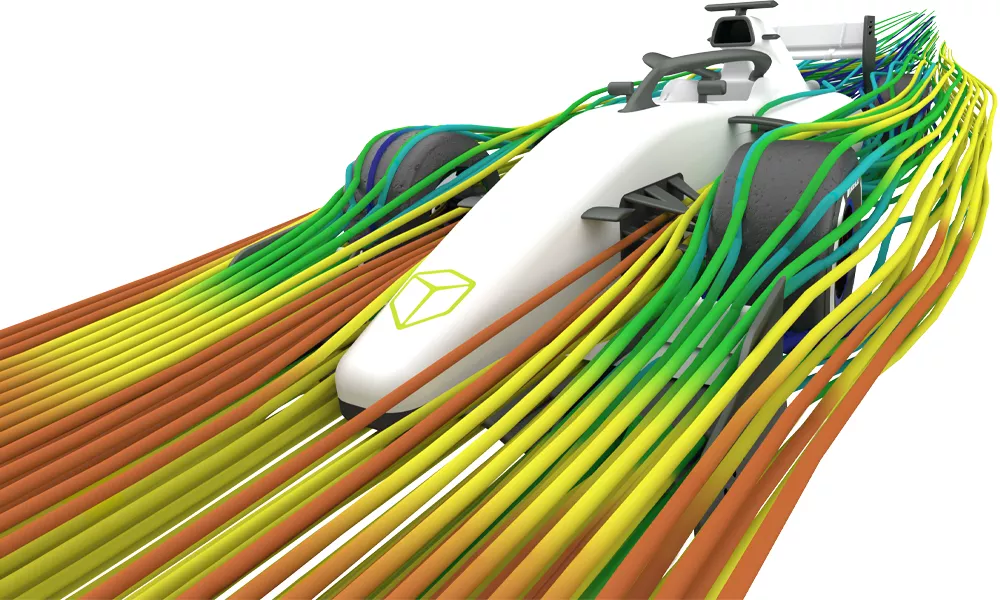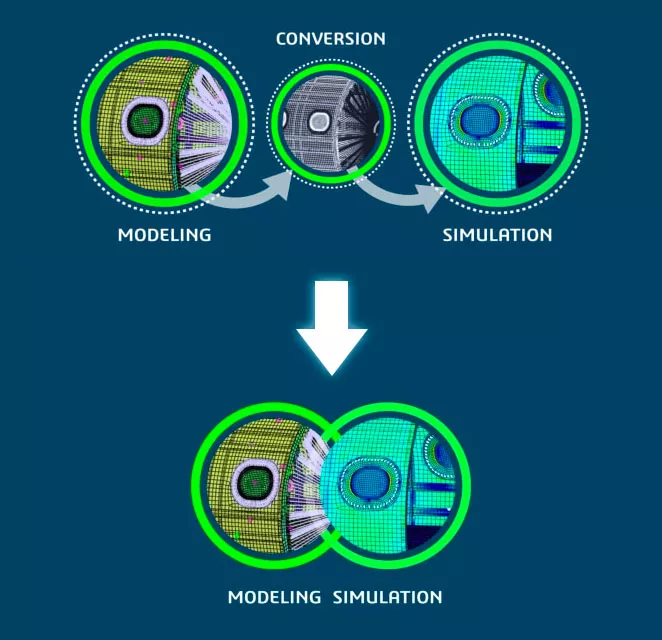MODSIM: Unified Modeling & Simulation
A New Standard for High-Speed Innovation
Engineering has long since recognized the potential of connected modeling and simulation. But as technology has advanced, that potential to shorten time to market, to reduce costs, to empower innovative thinkers – and to compound advantage upon advantage – has exploded.
More than just “modeling and simulation”.
MODSIM is a single user experience, a single channel for collaboration, and a single source of truth for all modeling and simulation activities. It has beginning-to-end impact on product development, from requirements to architecture, from validation to certification, and from product development to program management.
A competitive edge in challenging times.
MODSIM turns CAD and CAE into a single process, fully interwoven, working on the exact same data. It includes design exploration, advanced physics solvers, and next-gen modeling processes and automation, and making successful innovative processes easily reproducible. And it’s all within a change management and collaboration framework powered by cloud compute and cloud data services.
Article
A Special Look into Dassault Systèmes Powerful MODSIM Strategy
At face value, the integration of simulation and CAD is not a novel idea. But MODSIM is more than just that. It really is targeted to bring the technology together and then automate a lot of the manual labor that is standing in the way of doing these kinds of things in production.
The Benefits of MODSIM
![]()
Faster Time-to-Market
With cloud simulation, process automation, and unified CAD-CAE, dramatically reduce development time by up to 90% and from months to weeks.
![]()
Less Physical Prototyping
More comprehensive simulation done earlier in the concept design phase leads to only the most assured designs making it to the costly prototyping phase.
![]()
Lower Development & Manufacturing Costs
See significant improvement in development efficiencies of up to 40%, weight savings of up to 20%, and capex costs down by as much as 8%.
![]()
Innovate on the Razor’s Edge
Unified CAD-CAE enables automated, objective-based design exploration on a massive scale. Optimizing for competing design requirements has never been easier.
![]()
Fix Problems Early & Inexpensively
Heavy use of simulation during the early design phase uncovers issues before fix them becomes complicated and costly. This shift-left strategy reduces the risk of late-stage failures that can upend an entire business.
“Simulation enables us to push ahead. I love simulation because it enables faster development, more precise development, and lets us stretch to the limits of physics. It's really cool.”
– Stefan Menzl
Chief R&D Officer
WSAudiology
“We kind of live and die by MODSIM. Concurrent engineering, besides just being a wise choice, we literally wouldn't survive if we didn't do it that way ...and you won't remain competitive.”
– Joseph Lacey
Sr. Principal Mechanical Engineer
GE Healthcare
“Our designers can jump into the FEA apps on the 3DEXPERIENCE Platform, quickly change their designs, run another analysis, and see how it compares to previous designs. It prevents parts that aren’t fit for service from making their way through to the more complex analysis and testing phases, which can be very costly.”
– Alex Morley
Principal Analysis Engineer
Helix
The Impact of MODSIM
User Impact
Design engineers are under increasing pressure to satisfy more challenging design requirements in fewer design iterations, and with less physical prototyping. MODSIM makes it possible by increasing the accessibility of advanced CAE tools in multiple ways.
Simulation analysts are pulled from department to department, where they solve complicated and time-consuming problems that are often discovered far too late in the development process. MODSIM provides a singular and more automated user experience for a variety of specialist CAE tools, and it fully integrates them into the design process.
ONE Model for Everyone
Master design data – from CATIA, SOLIDWORKS, and other popular CAD systems – in the 3DEXPERIENCE PLM environment feeds all downstream tools, including CAE and CAM. No more CAD model & CAE results import, export, and conversion; managed access to data (and even software licenses) for partners, suppliers, consultants, and other contributors; and shared CAD-CAE project management.
Automating the Important-But-Tedious
Capture time-consuming modeling practices and reuse them with automation – geometry simplification, midsurfacing, meshing, connections, material assignments, contacts, loads, reporting, and more. Users at any level can quickly preprocess analyses while meeting company standards for consistent, high-quality results.
Democratization of Simulation
Templatize and standardize complex simulations for reuse across the organization. This packaged expertise establishes a standard of quality and consistency, and continues to provide great value at scale, to designers and analysts alike. The template creator moves on to their next simulation challenge, rather than repeating old work over and over.
Team Impact
Engineering team leaders are tasked with managing multidisciplinary teams spanning different departments, tools, and data, working toward different goals on the same products.
MODSIM provides a unified environment in which all these teams can accomplish their goals cooperatively rather than independently, producing better outcomes in less time.
Left Shifting
With all simulation tools working in the PLM system, advanced simulation processes accessible to designers, and all teams’ full visibility of requirements, design validation and verification can influence design from the very earliest phases.
By front-loading this kind of problem solving, better solutions can be found faster and at lower cost, saving enormous amounts of time and money in the overall development.
Design Tradeoff
MODSIM tools pierce the design-simulation barrier to accomplish both at the same time, in tight feedback cycles, with both human and automated approaches. Designers can get feedback from simulation analysts in hours rather than weeks since they work in parallel in the same system.
They can also work together on design exploration tools, setting up design variations and the evaluating analyses. Automated execution and results ranking produces a preferred design for the specified requirements.
They can go a step further with generative design tools, where they set up their design requirements and evaluating simulations, and launch a fully-automated design generation in the designated design space.
Collaborative Product Development
The 3DEXPERIENCE Platform that enables MODSIM is more than a design-analysis connector. It’s a holistic data and management environment on the cloud. All stakeholders can share ideas and interact, see their contributions in context, and solve problems together. Team leaders can manage their projects from one place, with full visibility and traceability at all times on everything (including 3D designs and simulation results).
Company Impact
Successful product developers need to quickly respond to the market with competitive products, again and again.
MODSIM provides company leadership with the real-time connected data to make informed decisions fast. That same connectivity improves management and collaboration across the board, resulting in faster, more predictable development at lower cost.
Moreover, MODSIM’s next-generation tools and automations allow skilled resources to scale their impact like never before.
Process Transformation
Getting things done becomes exponentially more challenging as companies (and the problems they’re solving) scale. Ambitious product developers can shake off decades of outdated and suboptimal processes and replace them with MODSIM.
Streamlined B2B Collaboration
MODSIM’s 3DEXPERIENCE Platform foundation accepts many different CAD systems so the business can work seamlessly with partners, suppliers, consultants, and others who may not be based in SOLIDWORKS or CATIA. This puts an end to CAD-based information and process silos, and it increases the flexibility of procurement.
A Winning Virtual Twin Strategy
MODSIM is a key part of the virtual twin strategy for addressing the growing complexity of product development and manufacturing.
The virtual twin is found in one location, the 3DEXPERIENCE Platform, and accurately represents the product for all stakeholders at all levels. It is everyone’s single source of truth.
The virtual twin is a powerful tool for left shifting. Leveraging simulation – and making changes – earlier in the design phase significantly reduces costly, complicated, and time-consuming late-stage failures. The result is lower total development cost and shorter time-to-market.
Making the Most of the Workforce
MODSIM’s focus on automation of both rote and complex simulation tasks can greatly improve worker productivity (and job satisfaction).
What were once time-consuming and manual simulation processes can now be handled automatically, with enough control to establish consistent company standards.
Knowledge capture tools allow specialists to templatize their expertise for others to reuse, allowing the specialist to find new ways to provide unique value.
Featured MODSIM Tools
MODSIM Starts Here.
3DEXPERIENCE CLOUD PDM
The Foundation of MODSIM: A secure PDM cloud (as-a-service or self-hosted) that connects all MODSIM contributors. (See more...)
3DEXPERIENCE CLOUD PLM
Manage MODSIM Anytime & Anywhere: Project and product management webapps with concept-to-manufacturing visibility. (See more...)
Modeling
SOLIDWORKS Connected
Where MODSIM Starts: SOLIDWORKS CAD with built-in cloud PDM. (See more...)
CATIA Connected
Where MODSIM Starts: CATIA with built-in cloud PDM. (See more...)
Third-Party CAD Connectors
The End of Import/Export: Natively use third-party CAD tools in MODSIM. (Traditional SOLIDWORKS & CATIA, NX, Solid Edge, Creo, Inventor, Allegro, Altium, and more.)
Mod + Sim
3DEXPERIENCE Generative Design
Simulate First, Model Second: Computer-generated design ideation based on your design requirements and virtual testing input. (See more...)
3DEXPERIENCE Multidisciplinary Optimization
Optimal Designs, All the Time: Automatically model, simulate, and evaluate countless variants in easy-to-setup design studies.
Simulation
3DEXPERIENCE STRUCTURAL
Gold-Standard Structural FEA: Powered by Abaqus with cloud compute and thorough CAD integration. (See more...)

3DEXPERIENCE FLUIDS
Powerful, Scalable CFD: Multiphysics-ready RANS CFD with cloud compute and thorough CAD integration. (See more...)

3DEXPERIENCE ELECTROMAGNETICS
Emag Sim from DC to Daylight: A complete suite for design & simulation of electromagnetic machines and devices. (See more...)
Featured MODSIM Tools
MODSIM Starts Here.
3DEXPERIENCE CLOUD PDM
The Foundation of MODSIM: A secure PDM cloud (as-a-service or self-hosted) that connects all MODSIM contributors. (See more...)
3DEXPERIENCE CLOUD PLM
Manage MODSIM Anytime & Anywhere: Project and product management webapps with concept-to-manufacturing visibility. (See more...)
Modeling
SOLIDWORKS Connected
Where MODSIM Starts: SOLIDWORKS CAD with built-in cloud PDM. (See product details)
CATIA Connected
Where MODSIM Starts: CATIA with built-in cloud PDM. (See product details)
Third-Party CAD Connectors
The End of Import/Export: Natively use third-party CAD tools in MODSIM. (Traditional SOLIDWORKS & CATIA, NX, Solid Edge, Creo, Inventor, Allegro, Altium, and more.)
And More!
Mod+Sim
3DEXPERIENCE Generative Design
Simulate First, Model Second: Computer-generated design ideation based on your design requirements and virtual testing input. (See product details)
3DEXPERIENCE Multidisciplinary Optimization
Optimal Designs, All the Time: Automatically model, simulate, and evaluate countless variants in easy-to-setup design studies.
And More!
Simulation
3DEXPERIENCE STRUCTURAL
Gold-Standard Structural FEA: Powered by Abaqus with cloud compute and thorough CAD integration. (See product details)

3DEXPERIENCE FLUIDS
Powerful, Scalable CFD: Multiphysics-ready RANS CFD with cloud compute and thorough CAD integration. (See product details)

3DEXPERIENCE ELECTROMAGNETICS
Comprehensive High-Performance EM Simulation: A complete suite for design & simulation of electromagnetic machines and devices. (See product details)
And More!
MODSIM Success Stories
Helix
Electric powertrain developer Helix has broken records and won awards for its high-performance electric motors and inverters.
It is driving continuous improvements with 3DEXPERIENCE to achieve a finely tuned design and streamline engineering process from concept to manufacturing.
Renault Group
For the past 30 years, numerical simulation has needed to become more accurate to predict physical behavior and is key when developing new products. However, simulation globally is still perceived as a tool for specialists, and consequently, induces delay during conception loops.
After an introduction about the Renault Group strategy named "Renaulution" and more particularly on validation cost reduction, Pascal Resmusan will explain how we empower design teams with well-integrated & efficient CAE/CAD software to size each component. This new process allows Renault to shorten design loops and quickly optimize a technical definition.
Unilever
Designing packaging solutions that minimize waste, maximize supply chain efficiency and consistently delight the consumer is not a trivial task.
Advanced modeling and simulation approaches are proving key to supporting Unilever's teams as they look to address increasingly complex challenges and successfully balance conflicting requirements.
eBook
MODSIM Insights from World's Leading Organizations
Sustainability is one of every industry's strongest business drivers. Products are getting more complex, requiring more testing and validation during development. At the same time, the need to eliminate waste, reduce emissions and innovate more efficiently is an urgent priority.
Across all industries, leading organizations are already demonstrating how unifying modeling and simulation (MODSIM) creates the basis to reach those goals. Download this ebook to learn how leading organizations empower their designers and product developers to validate requirements in the early stages of concept design while putting sustainability at the center of their work.
Read this ebook to understand the views of domain experts and industry thought leaders about MODSIM, the key enabler to achieving:
- Sustainability goals without compromising performance or user experience
- Collaboration with a data science approach to create a more efficient, connected, and coherent workforce for the future
- Significant improvement in product efficiencies of up to 40%, dramatically reduced development times from months to weeks, weight savings of up to 20% and the capex cost of up to 8%
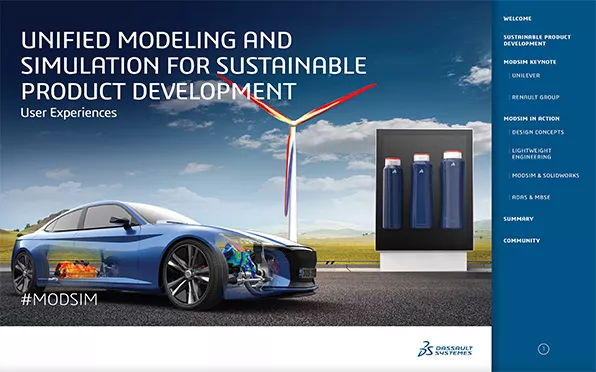
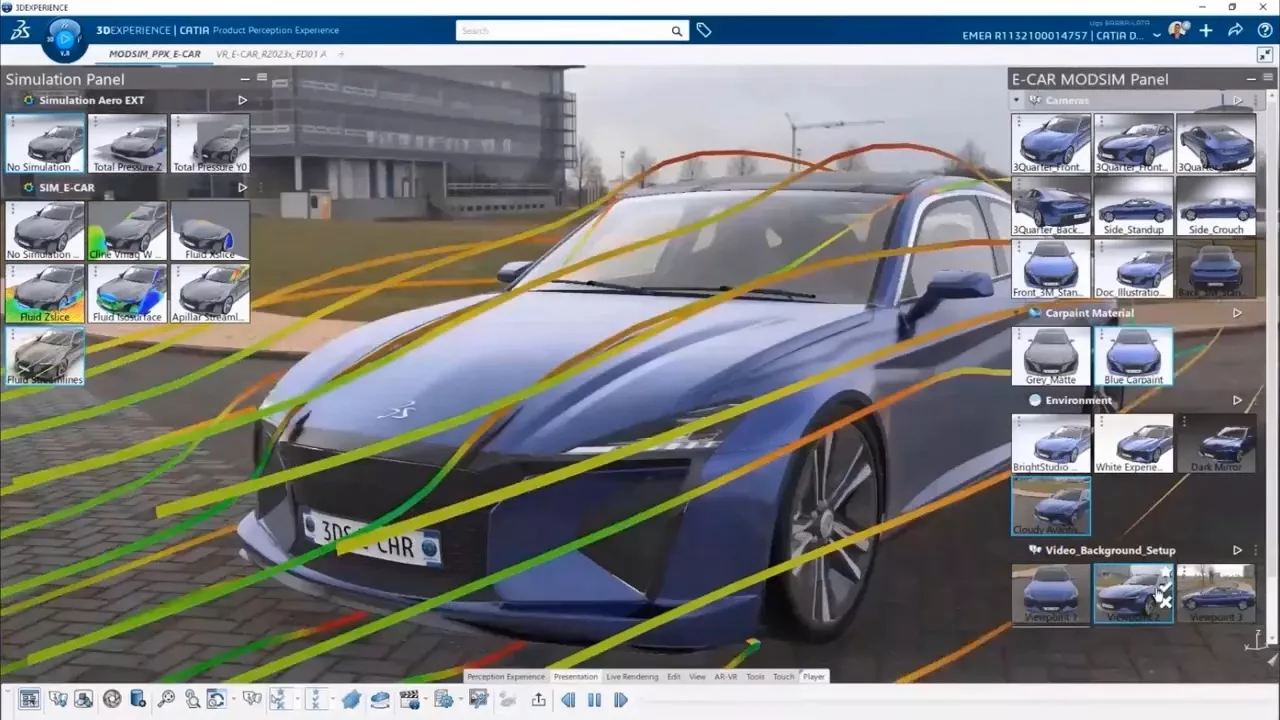
3DEXPERIENCE Vehicle Simulation & Styling
First impressions count a lot in the world’s automotive markets. A vehicle’s look is a major driver in the decision to purchase, and manufacturers are under pressure to bring impactful styles quickly to market. But consumers and regulators also want a vehicle that performs well in terms of handling, comfort and—especially for electric vehicles—range. Designers are under pressure to innovate but also to get it right the first time.
CATIA Design applications provide best in class tools to bring automotive stylists ideas to life. Since these tools are on the 3DEXPERIENCE platform, connecting to SIMULIA simulation technology is a seemless way to incorporate MODSIM and provide quick performance feedback to designers to deliver the best combination of performance & aesthetics.
Highlights:
- 3DEXPERIENCE based styling tools for early concept modeling
- Seemless & automated aerodynamic analysis
- Realistic rendering and interactive visualization
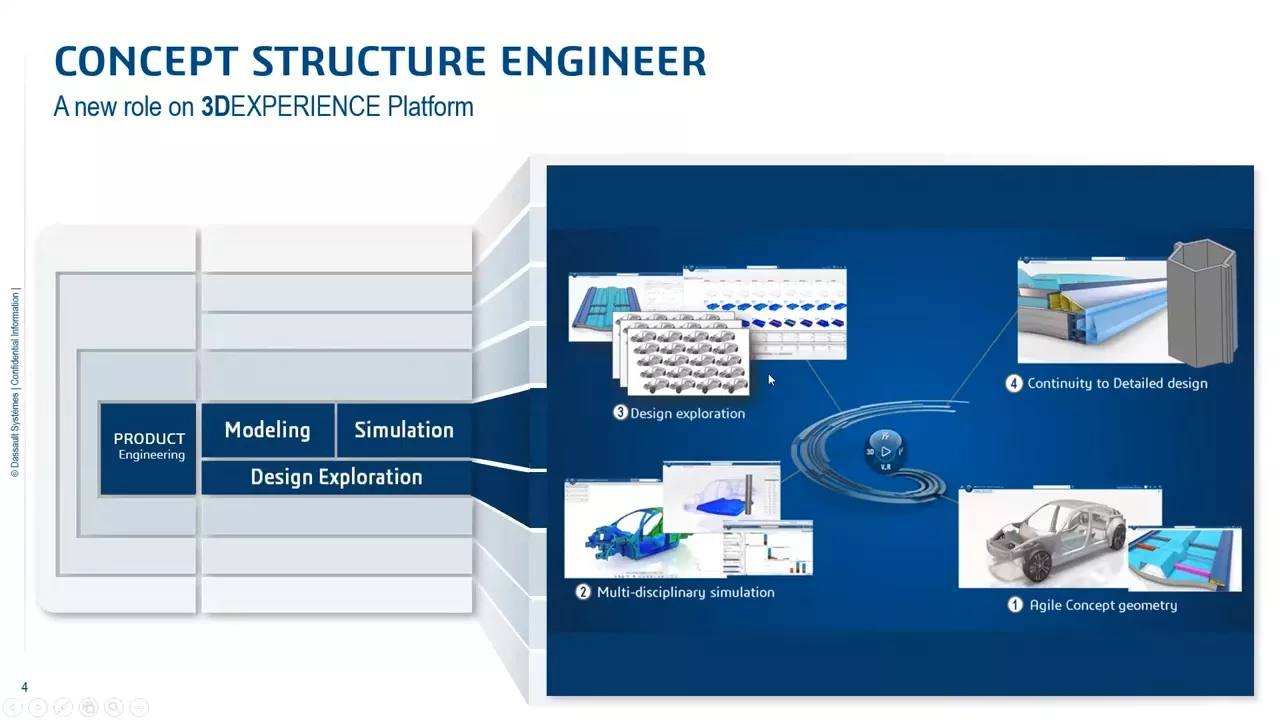
Go Beyond Simulation-Driven Product Development
Design and simulation are still disconnected disciplines. As a result, the information exchange between designers and simulation experts is often inconvenient.
Consequently, design iterations take too long making it challenging to meet efficiency requirements of modern product development cycles.
Our unified MODSIM approach can overcome these barriers and enable engineering teams to:
- Leverage the benefits of simulation early in the design cycle
- Validate products faster relying on an integrated data model for design and simulation
- Avoid working on outdated designs and improve change processes
- Democratize simulation to non-experts, making it accessible to a broader user base
Companies already embracing MODSIM on 3DEXPERIENCE achieve significantly faster development cycles and improved product performance.
In this webinar we will showcase streamlined engineering processes based on MODSIM, taking examples for electric drivetrain engineering and body-in-white concept engineering.
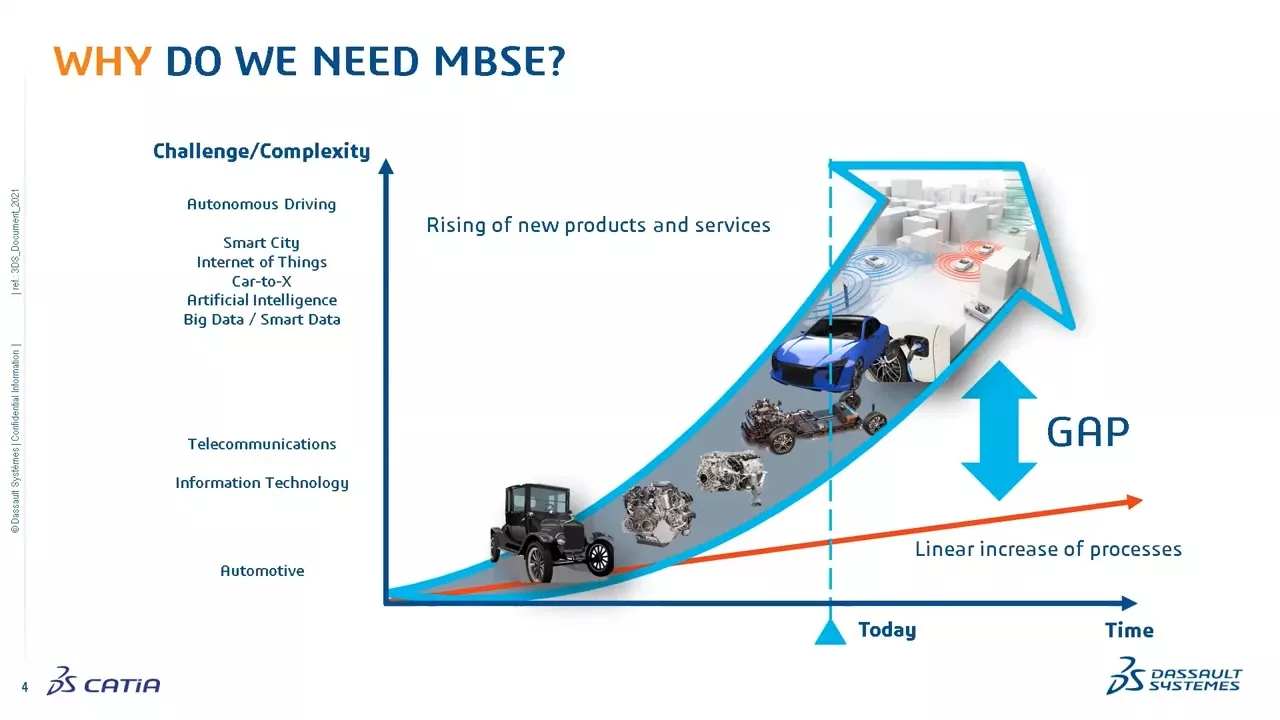
Requirements & Systems Engineering (MBSE)
The integration of requirements engineering, system architecture, design and validation creates a stable foundation for a functioning development process.
However, there are still challenges:
- A single-source-of-truth does not exist for the validation of technical project data
- Departments work in silos, often leading to inconsistencies in the value creation process
- Employees are more concerned with data search and interpretation resulting in decreased productivity
Model-Based Engineering (MBSE) breaks down the barriers by connecting interdisciplinary teams to enable a better understanding of the assignment, the scenarios and the needs of everyone involved.
Starting with the requirements specification, the definition of the use cases and the general understanding of the context of the system to be developed, a consistent but also complete system model can be achieved. This system model then builds the core of the following verification & validation processes that go hand in with the simulation models, reducing the need for prototypes within the product development process.
Using an e-drive as an example, this webinar will show how efficient product development is possible on the 3DEXPERIENCE Platform.
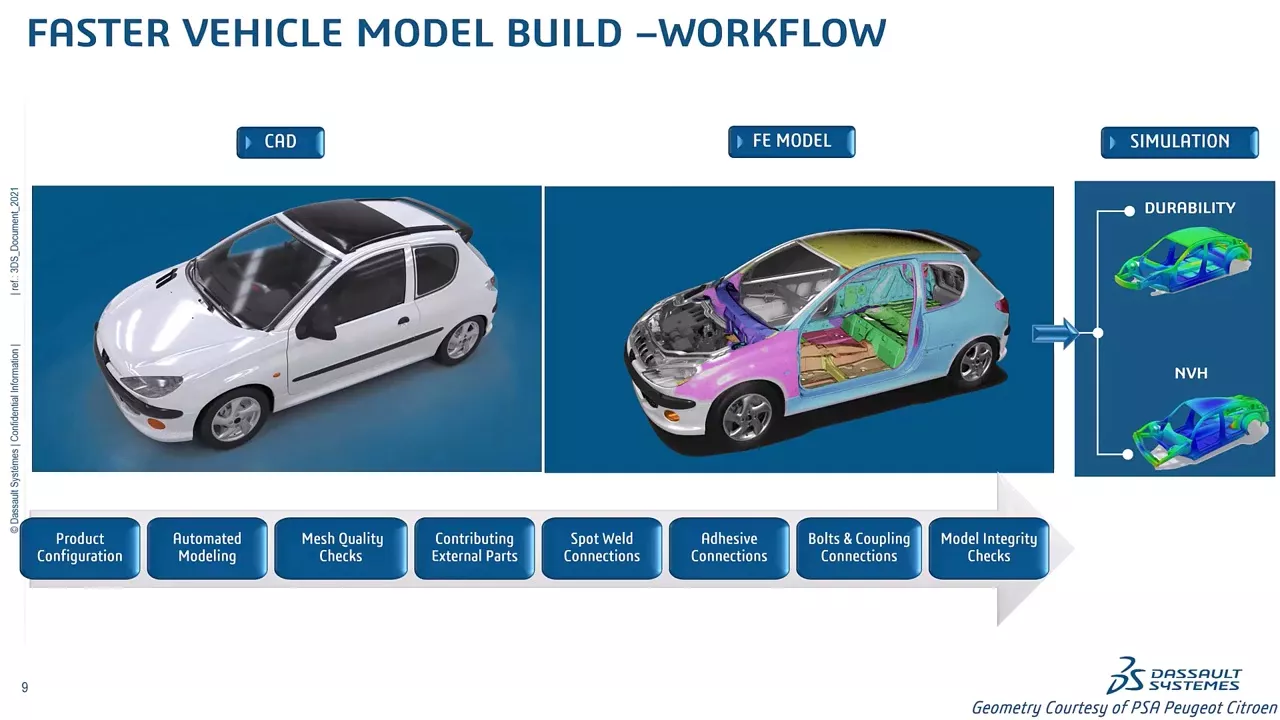
Faster Model Build for Accelerated Automotive Innovation
A new frontier has opened in the automotive industry. Traditional manufacturing methods used for internal combustion engine vehicles are giving way to the new design possibilities of EVs. Organizations must ensure these new vehicles meet strict global and local regulatory requirements for sustainability and performance. Simulation technology enables manufacturers to evaluate virtual prototypes of their vehicles in real-world conditions instead of building hundreds of physical versions to use in performance and crash tests. However, with traditional tools, creating a simulation-ready model can take longer than building a physical vehicle for actual testing.
By unifying modeling and simulation throughout the design cycle, manufacturers can manage the complexity of a vehicle development process, gaining the speed and efficiency they need.
The MODSIM approach, enabled by unified data and automated meshing & scenario definition, speeds up the traditional process from months to weeks.
Highlights:
- The 3DEXPERIENCE platform brings together all aspects of vehicle development, from requirements to geometry to performance with fast and easy access to a single source of high-quality data, enabling engineers to meet design goals on time & on budget.
- 3DEXPERIENCE integrated processes enable a unified environment for model build and analysis, as well as automatic model updates for part variants or revisions
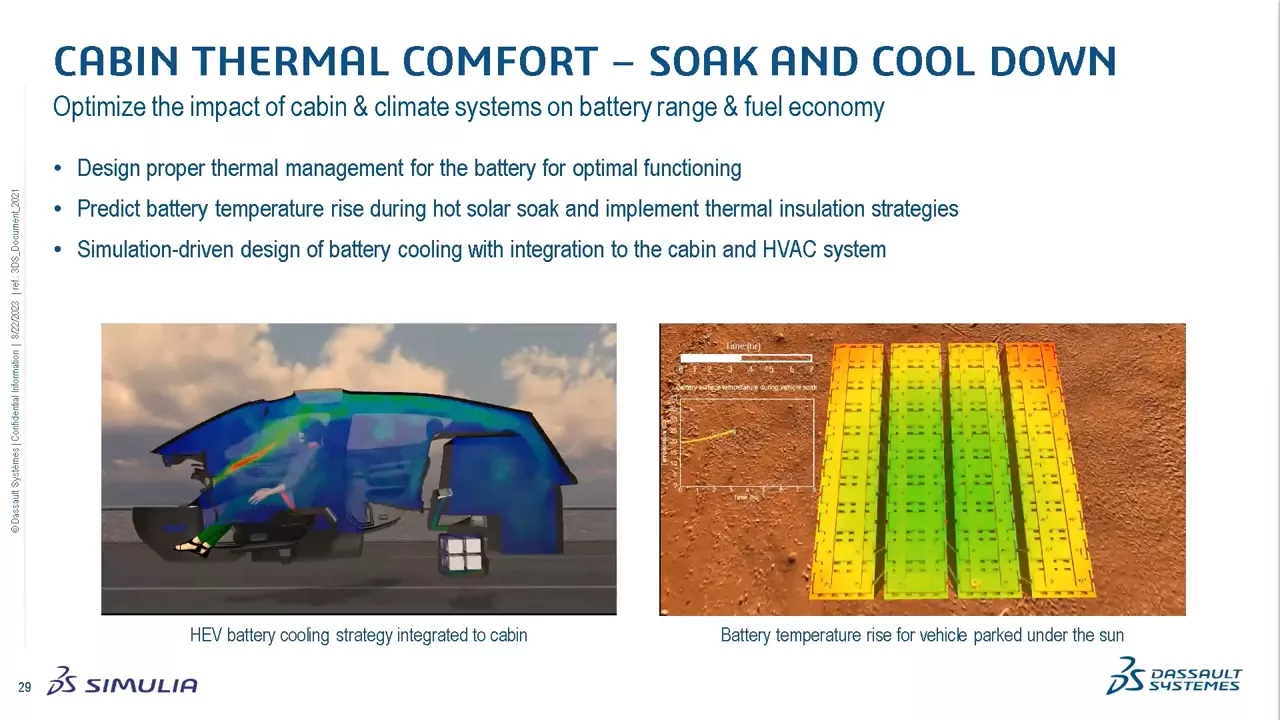
Design of High-Performance Thermal Systems with Unified Modeling & Simulation
OEMs and suppliers in automotive and industrial machinery segments share similar challenges in developing high-performance thermal systems. They must deal with ever-increasing product complexity, tighter regulatory requirements, and conflicting demands of reducing time and cost while meeting quality requirements and reducing environmental footprint.
Join this webinar to learn how advances in unified modeling and simulation enable collaboration between designers and engineers to assess and improve thermal system performance throughout the development process. Gain insights into the use of SIMULIA’s robust and validated computational fluid dynamics (CFD) simulation for accurately predicting real-world transient conditions in the most complex geometry.
The presentation will provide details on how to address a wide range of thermal design challenges:
- Create realistic virtual twins of your vehicle or machine to accelerate the development of high-performance thermal systems
- Use guided workflows, process automation and collaboration applications to democratize the use of simulation throughout the development cycle
- Analyze multiple design alternatives during the design process including: thermal protection, key off/soak, thermal duty cycle and cooling airflow
- Reduce physical testing for significant savings in turnaround times and cost.
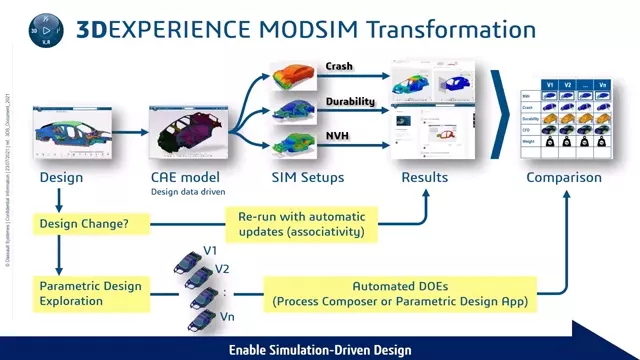
F1 & Motorsport - Revolutionizing Design and Simulation Practices
Join us and discover the dynamic implementation of MODSIM, revolutionizing day-to-day simulation in motorsport.
Deep dive into the world of simulation, harnessing the power of a unified data model that seamlessly connects designer and analyst—bridging the gap between their expertise and paving the way for enhanced collaboration and innovation.
Highlights:
- Walk through a concept F1 front wing workflow example
- Discover how the MODSIM approach is revolutionizing design and simulation practices
- Review the simulation roles and apps for designers and analysts
- Understand how democratization can improve efficiency by breaking down barriers between design and simulation communities
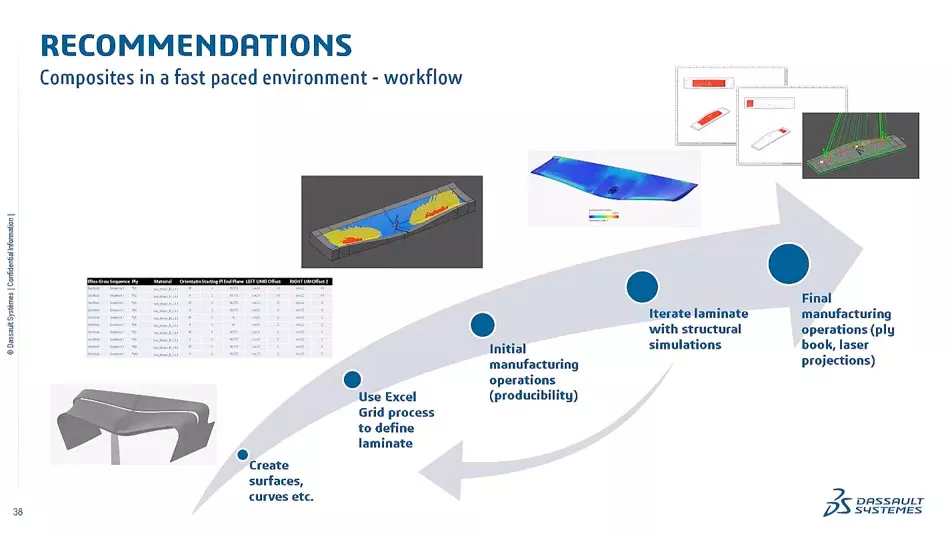
F1 & Motorsport - Engineering Robust Composite Components
Join us to discover the extensive modeling and simulation technologies that exist within a unified data environment. Understand how left shifting can add significant value to the composite design process, empowering designers and engineers with cutting-edge tools to develop the best possible composite products.
Highlights:
- Discover how our solutions can play a pivotal role in designing robust composite components within the motorsport industry
- Topics covered: concept level composite design, detailed composite design & manufacturing and composite simulation
- Explore examples showing typical F1 composite components and the design and analysis process utilizing a modeling & simulation (MODSIM) approach
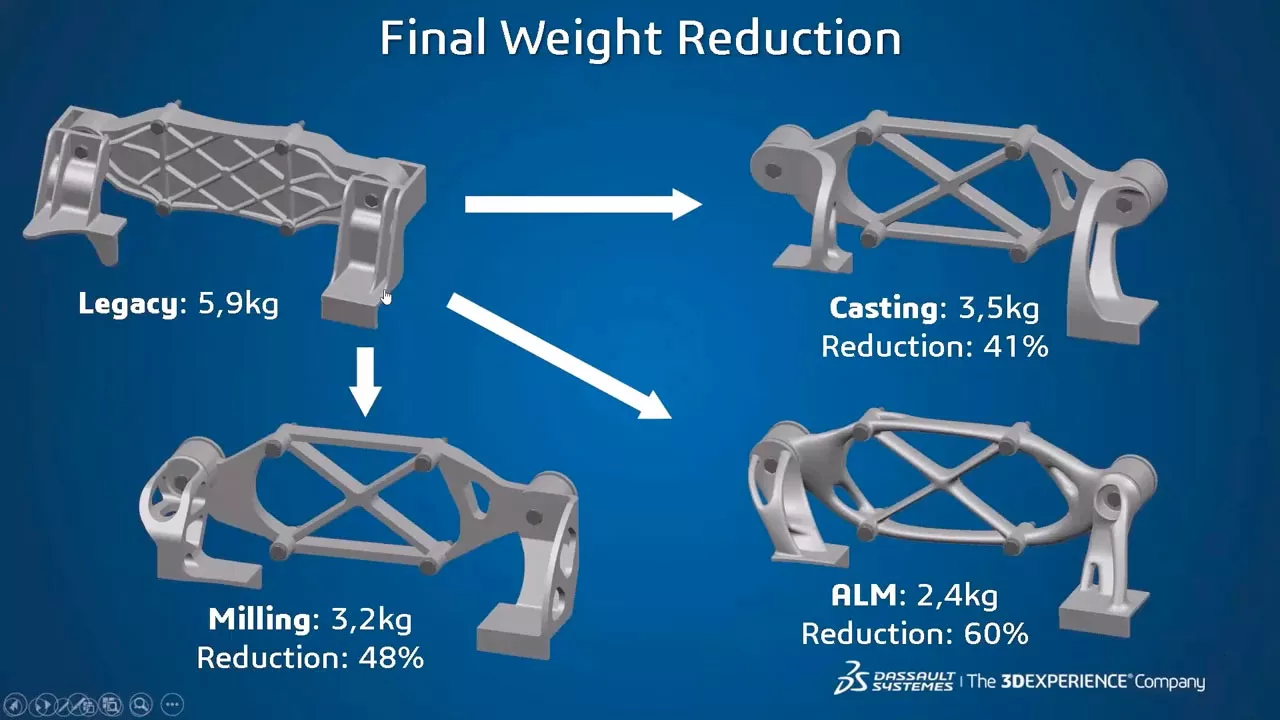
F1 & Motorsport - Optimizing Designs for Peak Performance
Discover the new world of performance-driven design, where optimal designs are computer-generated based on requirements and KPIs. Whether that is to reduce the weight of existing designs, design new parts more efficiently or be a source of inspiration for more innovative designs.
Highlights:
- Introduce design exploration on the 3DEXPERIENCE platform
- Deep-dive into parametric and topological optimization, which allows engineers to explore the complete design space and discover new and improved designs more quickly and easily than traditional approaches
- Review other complementary technologies, such as shape and bead optimization.
Why MODSIM with GoEngineer?
Support
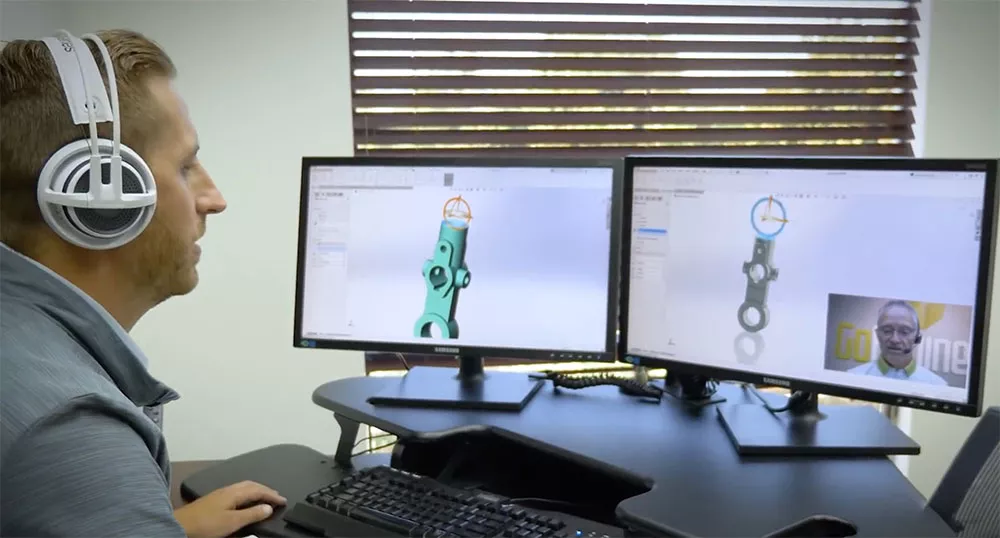
GoEngineer customers receive top-of-the-line tech support 12 hours a day (8am-8pm ET/5am-5pm PT), every weekday, from our 125+ certified technical specialists. Few partners can match GoEngineer's history supporting 3DEXPERIENCE since 2014.
They also receive complimentary yearly Application Mentoring Sessions, where they can explore their technology investment in a personalized and focused setting -- discuss needs, ask questions, or get demonstrations in any engineering area or product in the GoEngineer portfolio.
Training

GoEngineer customers get unprecedented access to software training in many forms, so they can choose what's right for them:
- In-person classes at nationwide GoEngineer locations
- Custom on-site courses by request
- Frequently-held, instructor-led online courses
- Self-paced online training with office hours for support
MODSIM Expertise
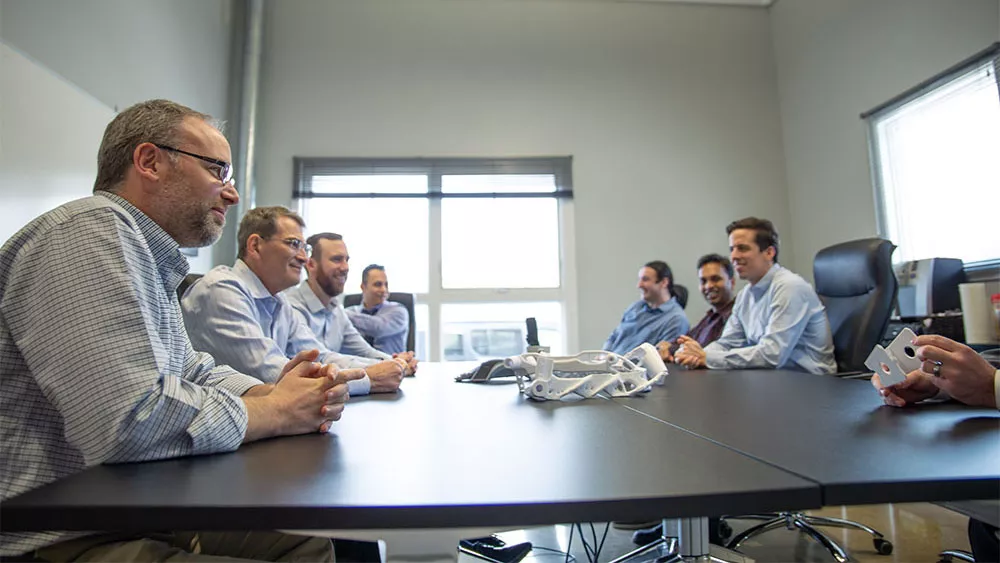
GoEngineer customers receive advanced simulation support from our practicing FEA & CFD consultants who use the tools in the real world every day. More than just answering simple questions, they offer:
- FEA & CFD consulting
- Simulation-based design consulting
- Methodology development
- Individual mentoring
Meet the team in our blog post:
Customer Portal & Community
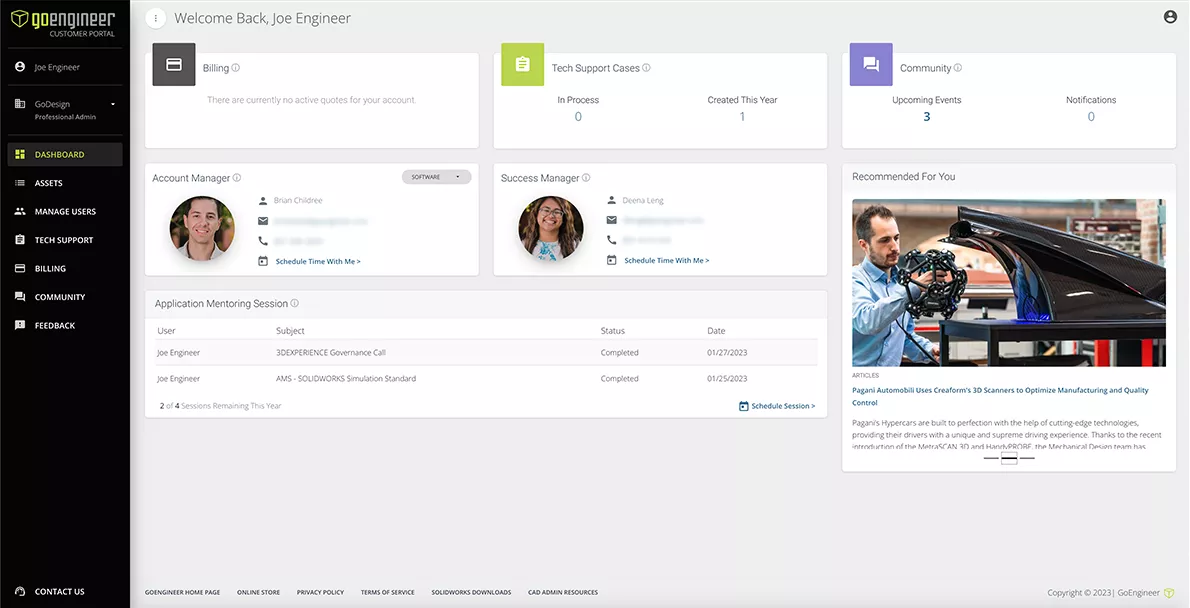
GoEngineer customers get a comprehensive, realtime overview of their account in the Customer Portal:
- View assets, monitor status and expiration dates
- Manage users
- Create and manage tech support cases
- Schedule time with your account manager and success manager
- Schedule application mentoring sessions
- See billing history
- Submit feedback
- Active discussion forum of SOLIDWORKS & 3DEXPERIENCE users
Additional Resources
Take Advantage of GoEngineer’s Extensive Knowledge Base and Resources

Find a Solution
Our robust Knowledge Base contains over 12,000 resources to help answer your product design questions. From basic CAD questions to in-depth guides and tutorials, find your solution here. Find a Solution

PROFESSIONAL TRAINING
Improve your skills with professional training and certifications in SOLIDWORKS, CAM, 3D Printing, and 3D Scanning offered four ways: self-paced, online, on-site, or in-classroom. Certified Training Courses

BLOG
#1 Technical Resource Worldwide - Right at your fingertips. Search or browse through hundreds of SOLIDWORKS tips & tricks, additive manufacturing product developments, announcements, how-to guides, and tutorials. Blog

YouTube Channel
Our YouTube channel hosts hundreds of educational tutorials, product demonstrations, recorded webinars, and best practices for all of our products and services. GoEngineer's YouTube Channel
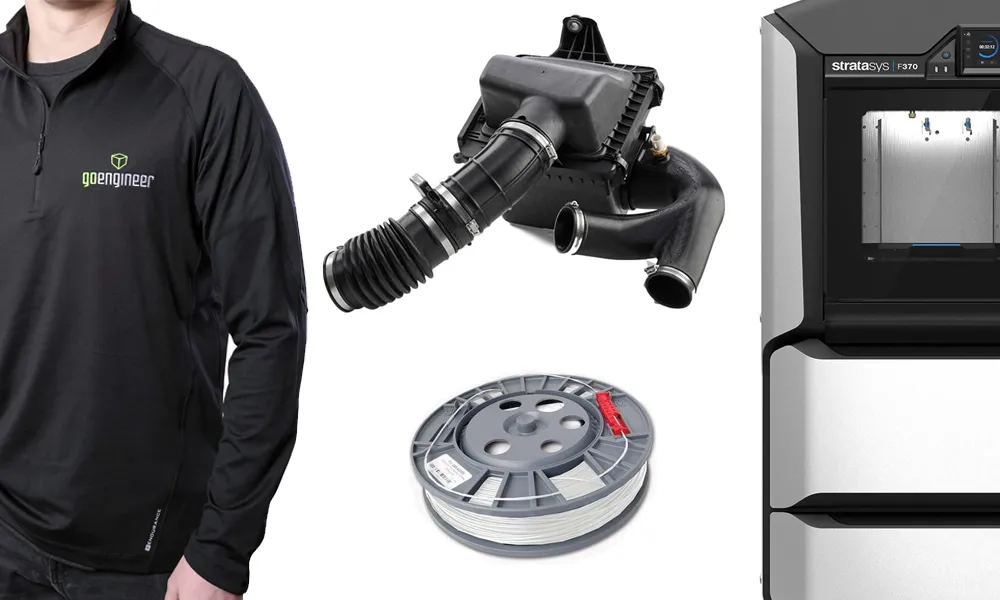
ONLINE STORE
Order 3D printing materials and consumables, enroll in SOLIDWORKS training classes, and buy official GoEngineer gear directly from our online store. Online Store
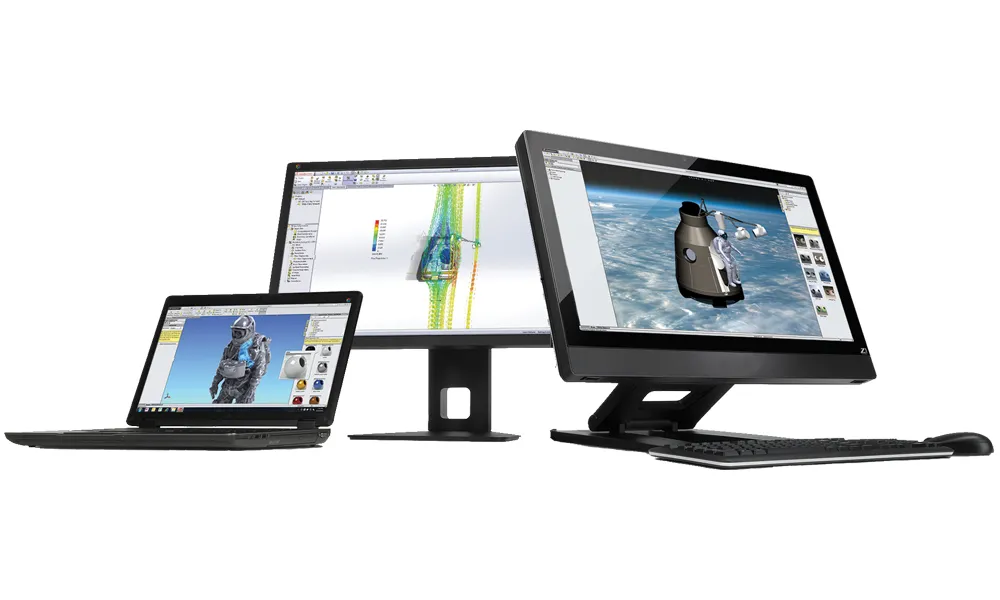
WEBINARS
Our engineering webinars are hosted by some of the top experts in the industry. They are always recorded, always free, and always offer a live Q&A. WEBINARS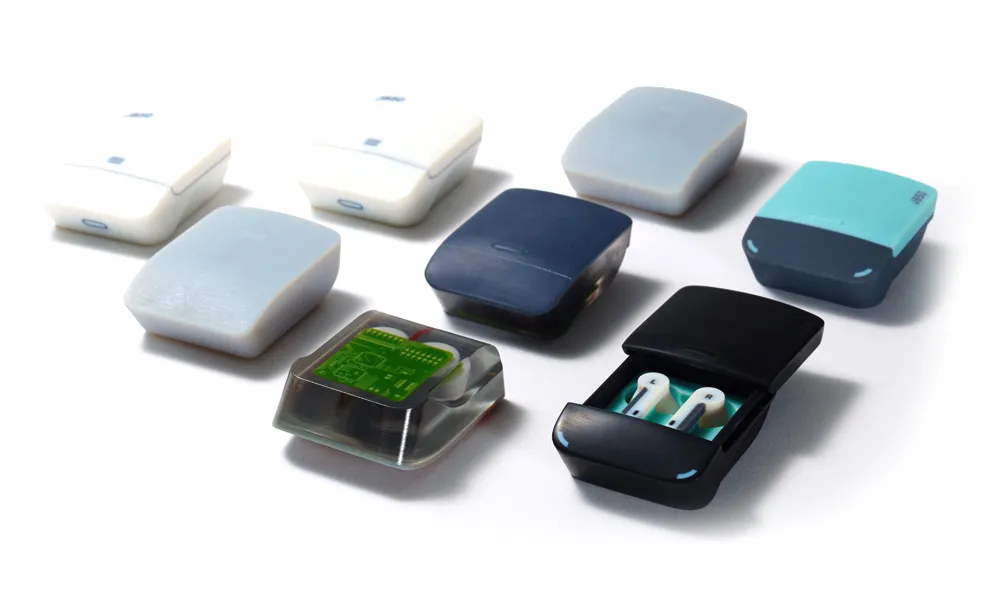
3D Printing Services
Need to 3D print a part? Our Additive Manufacturing experts will 3D print your part and deliver it to you using the latest technology on one of our professional FDM, PolyJet and SL 3D printers. 3D Printing Services